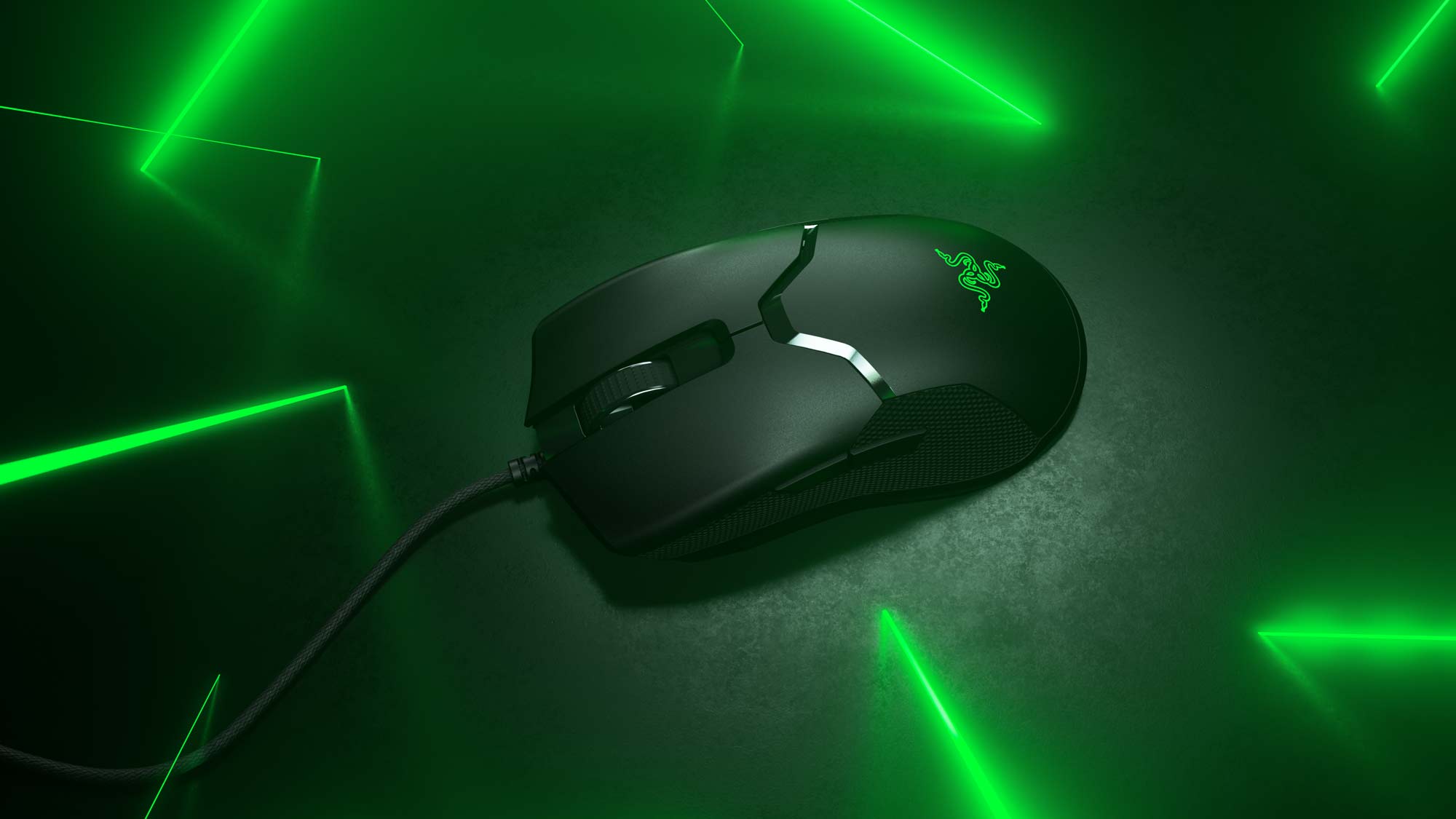Tom's Guide Verdict
Pick up the Razer Viper if you're an esports enthusiast with $80 to spare. If you're a more casual player, a cheaper mouse with a more ergonomic design will be a better fit.
Pros
- +
Smart, comfortable design
- +
Excellent performance
- +
Convenient button layout
- +
Robust software
Cons
- -
Slow scroll wheel
- -
Expensive
Why you can trust Tom's Guide
The Razer Viper ($80) is yet another addition to the company's crowded gaming mouse roster, this time targeting fans with esports inclinations in mind.
Given that Razer already makes a number of peripherals that work just fine for competitive multiplayer, the Viper is not exactly stepping into an empty niche. But as a refined, comfortable peripheral with a few interesting tweaks, it gets the job done. In fact, despite my initial skepticism ("How many everyday gamers really need a specialized esports mouse, anyway?"), I thoroughly enjoyed my time with the Viper. The mouse has a smart, sleek design that I haven't seen in a Razer mouse before, and it works well with whatever competitive game you care to throw its way.
I wasn't a big fan of the Viper's stiff scroll wheel, and the asking price is a bit high, considering what competing brands offer for the same price. But if you think you've got what it takes to compete in big-league gaming, and don't currently have the right tool for the job, the Viper could be just what you're looking for.
Design
The Viper's design is so minimalist, it took me a few days of use to discover that it's actually full of subtle touches. The Viper is a symmetrical, ambidextrous mouse, and it's quite easy to use for both righties and lefties. There are slight curves and textured grips on both sides, for a simple-but-ergonomic feel.
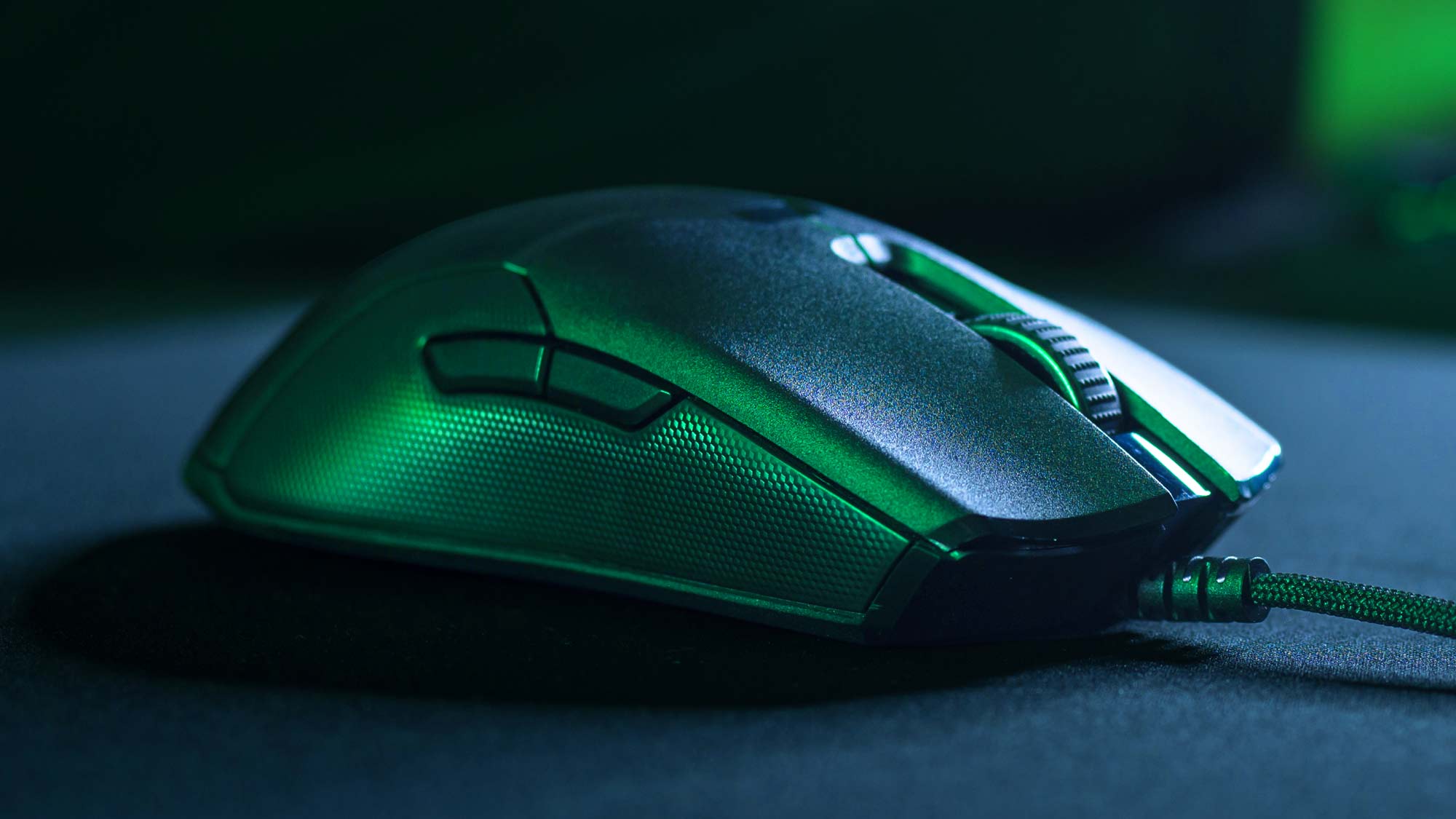
My favorite part of the mouse, though, is the strange-looking ridge where the palm rest meets the buttons. I was sure this little piece of shiny plastic would pinch my palm, but it's positioned to support the top of my palm while letting my fingers curve gently down onto the buttons. It's hard to describe, but you'll know what I mean if you get a chance to hold one for yourself.
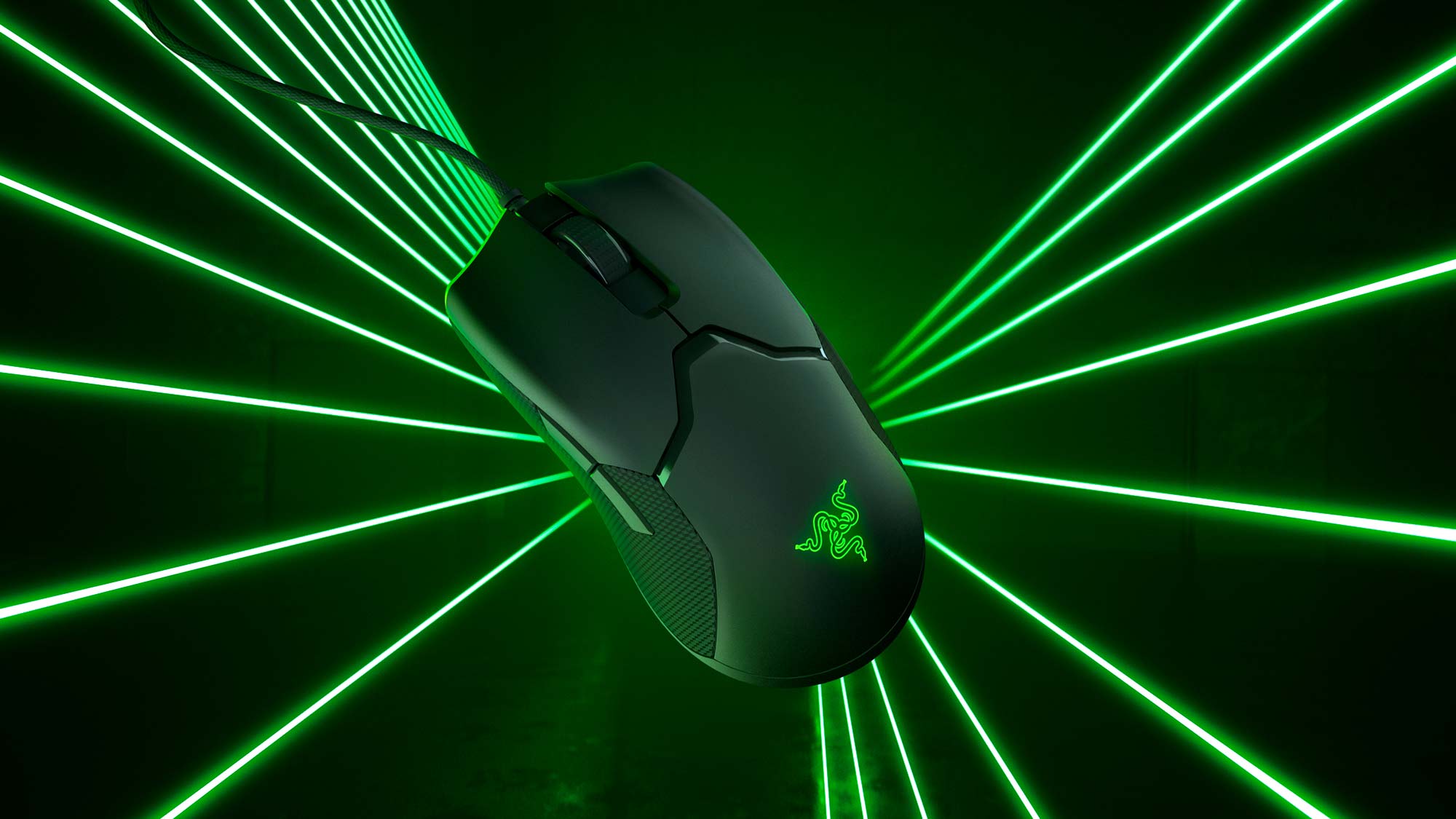
The Viper's design is so minimalist, it took me a few days of use to discover that it's actually full of subtle touches.
The button layout is also very sensible. There's a right button, a left button, a clickable scroll wheel and two programmable thumb buttons on either side. At first, I missed having the two dots-per-inch (DPI) sensitivity adjustment buttons on the mouse's face, like the DeathAdder Elite offers, but I soon found a single DPI button on the bottom of the mouse. For esports enthusiasts, this makes a lot of sense; adjusting DPI in the middle of a round is not very common, so putting it out of the way helps prevent mistaken clicks that could derail a match.
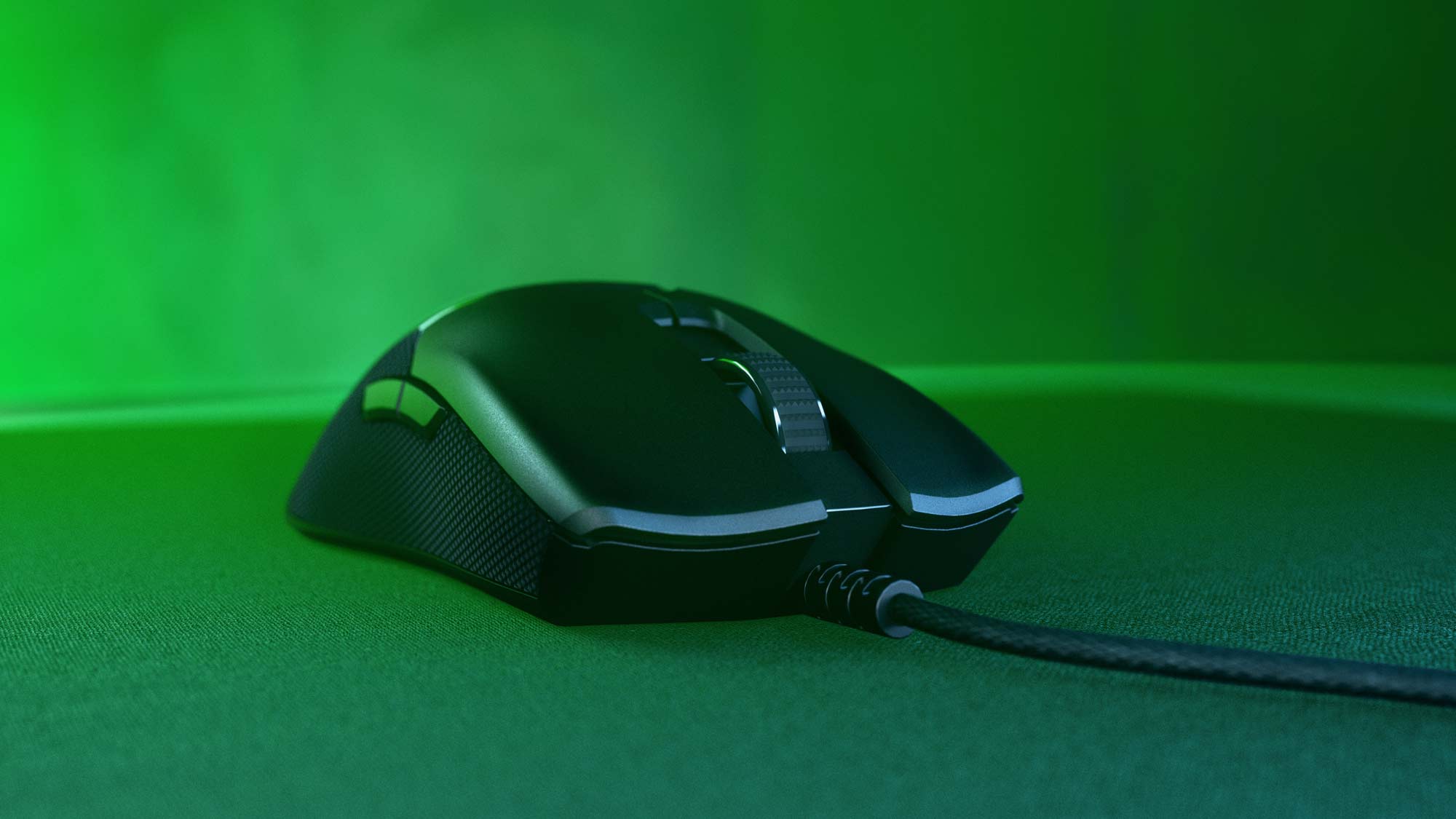
While the Viper mostly felt great, the scroll wheel was a pain to use during everyday situations. I know that in the middle of a multiplayer match, the scroll wheel is usually one of the least important tools at a player's disposal. But if you're going to spend $80 on a mouse, chances are you'll want to use it for more than just gaming, and the small, slow scroll wheel makes productivity a chore. You can't do anything to adjust its resistance or program its speed, either.
Features
The Viper runs on Razer's mercurial Synapse software. Depending on the product, I've found Synapse to be superlative, unusable and just about everything in-between. This time, though, the software worked fine, letting me reprogram all the buttons with ease (except for the left click; that one's set in stone). You can adjust the RGB lighting with plenty of pretty patterns, or calibrate your mouse to whatever surface you're using as a mousepad.
MORE: Best Gaming Mice of 2019
You can also create unique profiles with various color, button and calibration options, then link them to specific games. You can use an onboard profile, in case your tournaments of choice don't allow the Synapse software to run in the background, or you can store the profiles on your PC, if you're just experimenting with various settings at home. It's all admirably straightforward, including the "right-hand" or "left-hand" selection at the bottom of the screen, which will automatically disable one set of thumb buttons. (Even without this concession, though, I found it very difficult to hit the "off" set of thumb buttons by accident, in contrast to similar mice from SteelSeries and Roccat.)
Performance
Since the Viper is intended for an esports crowd, I eschewed my usual eclectic mix of games to test, and focused exclusively on RTS, MOBA and FPS titles. I wasn't surprised to find that the Viper performed very well across the board, particularly since it employs the same 5G optical sensor as the similarly excellent DeathAdder Elite.
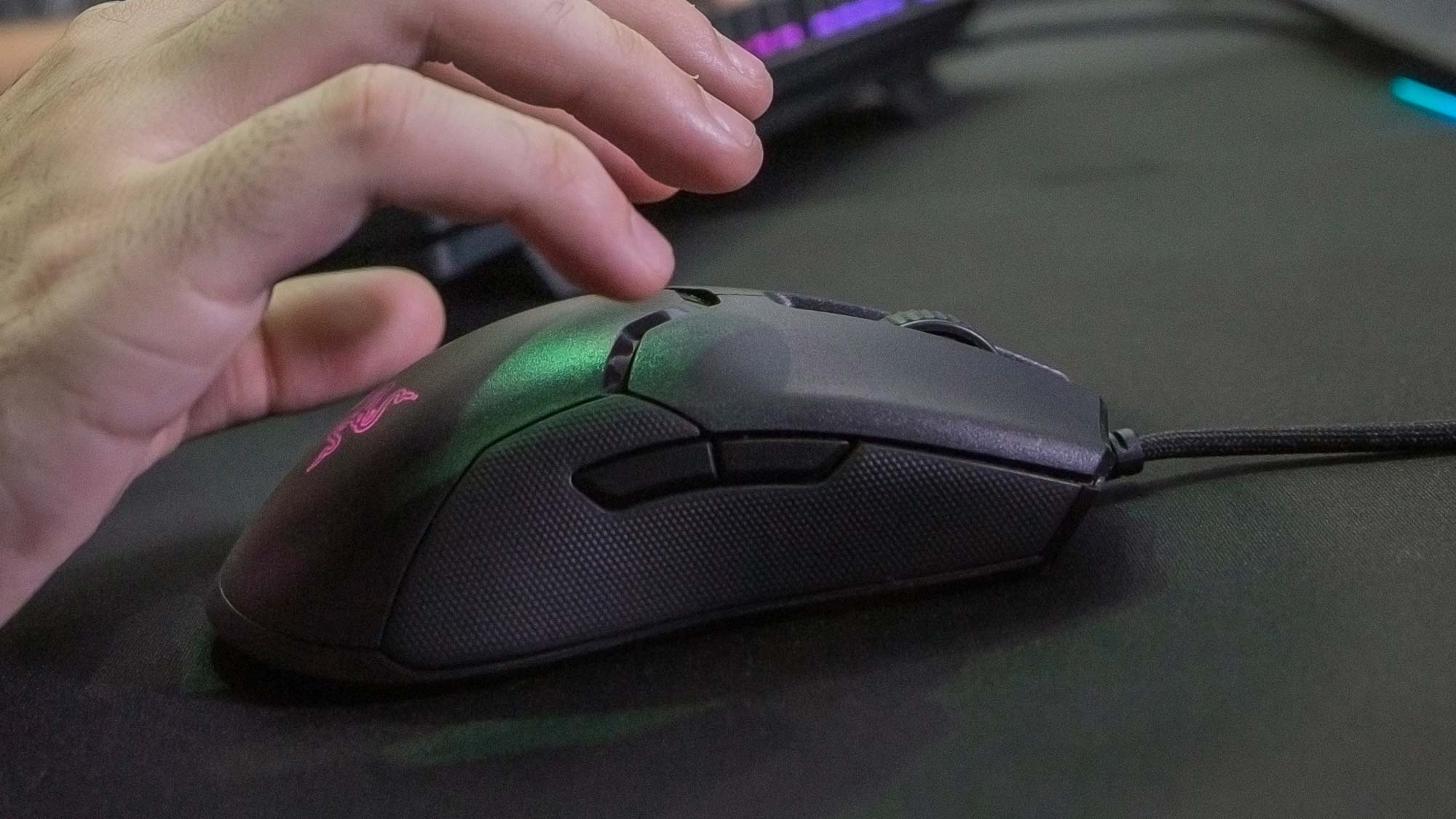
I wasn't surprised to find that the Viper performed very well across the board, particularly since it employs the same 5G optical sensor as the similarly excellent DeathAdder Elite.
Whether I was fighting off enemy soldiers in Heroes of the Swarm, targeting foes with my Ultimate abilities in Overwatch or building up bases and repelling hordes simultaneously in StarCraft: Remastered, the Viper responded quickly and accurately to my commands. I can't foresee any problems for esports professionals — unless you absolutely need a DPI-lowering "sniper" button. But even then, you could program one of the thumb buttons to serve that purpose.
Bottom Line
The Viper is a straightforward, well-designed mouse that should fit easily into the palm of any up-and-coming esports enthusiast's hand. Granted, I am not a competitive whiz kid, but I thoroughly enjoyed my time with it. And, surprisingly, I even think the Viper has managed to carve out a pleasant little niche in a very crowded gaming mouse market.
My biggest concern with the device is that $80 is a lot to ask for what is ultimately a fairly no-frills mouse. A DeathAdder Elite with the same sensor goes for around $50, as does Logitech's streamlined G Pro mouse. But an $80 mouse should last you a good few years, so if $30 represents an attainable upsell for you, go forth and throw your hat into the virtual ring.
Marshall Honorof is a senior editor for Tom's Guide, overseeing the site's coverage of gaming hardware and software. He comes from a science writing background, having studied paleomammalogy, biological anthropology, and the history of science and technology. After hours, you can find him practicing taekwondo or doing deep dives on classic sci-fi.
